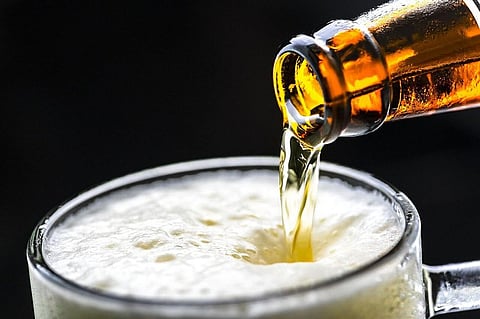
- Home
- न्यूजग्राम
- India
- World
- Politics
- Entertainment
- Culture
- Lifestyle
- Economy
- Sports
- Sp. Coverage
- Misc.
- NewsGram Exclusive
- Jobs / Internships

BY TAPO VIJAY KAR
The land of Mystic and ancient culture has a way towards the ecstasy of intoxication. Perhaps more than the purpose the mysticism is in its acquired knowledge of Mother Nature and the little nuances which is part of deriving the effect. India for long walks shoulder to shoulder in its march of deriving mystic brews out of the available ingredients found in its vast lap. Whats even more interesting is the fact that the brews got influenced not only by the diversity of land, climate, soil, temperature, and culture but significantly got smitten by the invasions and formation of interlocks of cultures. Mystic.
One must have a flavor of the different origination of these brews and alcoholic beverages and apart from admiring the palatable taste of it, the appreciation should extend for the knowledge of science that revolves around the same and is passed on to hundreds of generations maintaining the sanctity of the brew and hence its purity. The basic science of converting sugar and starch to alcohol with the help of micro-organism was invented long back. In Indian subcontinent, the mention of such beverages dates back to as old as 3000 yrs. The Rigveda (1500 BCE) mentions soma and sura, which are alcoholic beverages. With the time changing the brews, the beverages have only acquired and improvised on the methods to make it more potent and smooth, negating the congeners with each shades of passing time. We may blame it to on the theories of western economic supremacy and marginalization of indigenous spirits over western ones or perhaps do any detailed study of brand recognition and do a deep dive analysis of the same, but the fact remains that these spirits are as good as any of its sisters and cousins across the globe.
I have travelled through and got the privilege to taste some of the most exotic and potent beverages of all time served with its unique accompaniments by the most hospitable hosts met in my life so far. I am glad to open the sneak peek show into the world of Indian alcoholic beverages. This time, its 4 such elixir.
Here I open the chart –
One must have a flavor of the different origination of these brews and alcoholic beverages and apart from admiring the palatable taste of it, the appreciation should extend for the knowledge of science. Pixabay
The journey to the traditional beverages is not only intoxicating by the value of alcohol but by the amount of culture and history it has soaked inside it for ages and centuries. They stand tall with their family which is spread across the human civilization. These beverages are the finest hand crafted beverages, the recipe of which is passed on from generations to generations manifesting the wisdom of our species.
